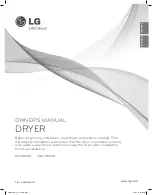
Note:
After filtering the oil, it can be left in the
fryer. However, should a long period of
time pass between one frying and the next,
it is advisable to store the oil in a closed
container, not exposed to direct light in
order to avoid its deterioration.
To drain the oil into the receptacle, remove
the drainage tube and proceed as shown
in fig. 10.
Oil used for frying fish should be stored
separately from oil used for other foods.
If fat is used for frying, this should
not be allowed to cool too much,
otherwise it may solidify.
For models without the drainage tube:
Proceed as follows:
1. Remove the lid (fig. 12) and carefully pour oil
or fat into a container as shown in fig. 11.
2. Replace basket in highest position and place
one of the supplied paper filters in the bottom
of the basket (fig. 8). Spare filters can be
obtained from your dealer or from our service
centres.
3. Pour the oil very slowly into the basket,
ensuring that it does not overflow from the
filter (fig. 9).
Note:
After filtering the oil, it can be left in the
fryer. However, should a long period of
time pass between one frying and the next,
it is advisable to store the oil in a closed
container, not exposed to direct light in
order to avoid its deterioration.
Oil used for frying fish should be stored
separately from oil used for other foods.
If fat is used for frying, this should
not be allowed to cool too much,
otherwise it may solidify.
CHANGING THE ANTI-ODOUR FILTERS
After a time, the anti-odour filters fitted to the lid
tend to lose their effectiveness. When the filter
changes colour, this indicates that it must be
replaced (the filter may be inspected through the
opening
E
in the lid). To replace the filter, remove
the anti-odour filter cap
B,
pushing on the filter
cap fastening hook
A,
as showned by the arrows
1
and
2
. (fig. 13).
Proceed as follows to change the filters:
N.B
: The white filter must be fitted, resting on the
metal surface (see fig.14). The colored
section must face upwards (or face the black
filter).
Refit the cap
B
, making sure that the hook
fastenings at the back have been fitted correctly,
as shown in fig.14.
CLEANING
Before cleaning,
ensure the appliance is
unplugged.
Never immerse the fryer in water or
place under a tap, as water in contact
with electrical components may cause
electric shocks.
Always remove the filters before immersing the lid
in water.
Proceed as follows to clean the bowl:
•
Allow the oil to cool for about two
hours,
then drain the bowl as described in
“drainage of oil”.
• Remove any deposit from the bottom of the
bowl using a sponge or a paper towel.
• Wash the bowl with hot water and liquid
detergent. Rinse and dry carefully.
• Use the special cleaning brush supplied with
the appliance to clean the oil drainage tube (if
fitted) (fig. 15).
• Clean the basket regularly, taking care to
remove any particles that might have been
accumulated.
• The basket can be washed in a dishwasher.
• After frying, wipe the outside of the fryer with
a soft damp cloth in order to remove any oil
smears and condensation.
• Also, clean and dry the sealing gasket in order
to prevent it sticking to the bowl when the fryer
is not in use. (If the gasket sticks to the bowl,
open the cover with one hand while pressing
the aperture button with the other).
• Abrasive sponges or alcohol should not be
used to clean the small window (if fitted).
• Wash the moisture absorber (
U
) with warm
water at least every 5-6 times the fryer is used
If the fryer is not used for some time, make
sure that the sponge is clean before the
appliance is stored away, thereby avoiding
unpleasant odours.
REPLACING THE TIMER BATTERY
(fig. 16)
(for those models so equipped)
• Remove the timer from its housing by pressing
firmly on the left side (1).
• Turn the battery cover on the back of the timer (2)
in an anti-clockwise direction until it comes off.
• Replace the battery.
9
573653 GB 5-12-2000 09:37 Pagina 9





































